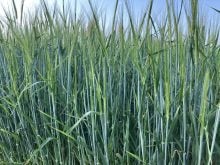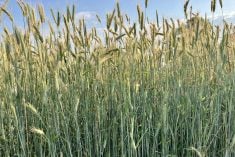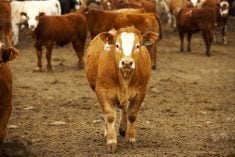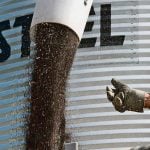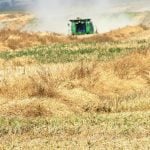From surveillance to testing to restocking, two experts outline how an investigation works
A case of bovine tuberculosis was detected in a cow at slaughter in Alberta. It was traced back to a farm in Saskatchewan, where more positive animals were detected, leading to the launch of a vigorous eradication and investigation process by the Canadian Food Inspection Agency. But many producers don’t know what this process looks like, or what happens if it involves them.
At the Saskatchewan Beef Industry Conference, professionals from the Saskatchewan government and Canadian Food Inspection Agency (CFIA) spoke about the bovine tuberculosis eradication program, what the investigation process looks like and what to know.
Bovine tuberculosis
Read Also
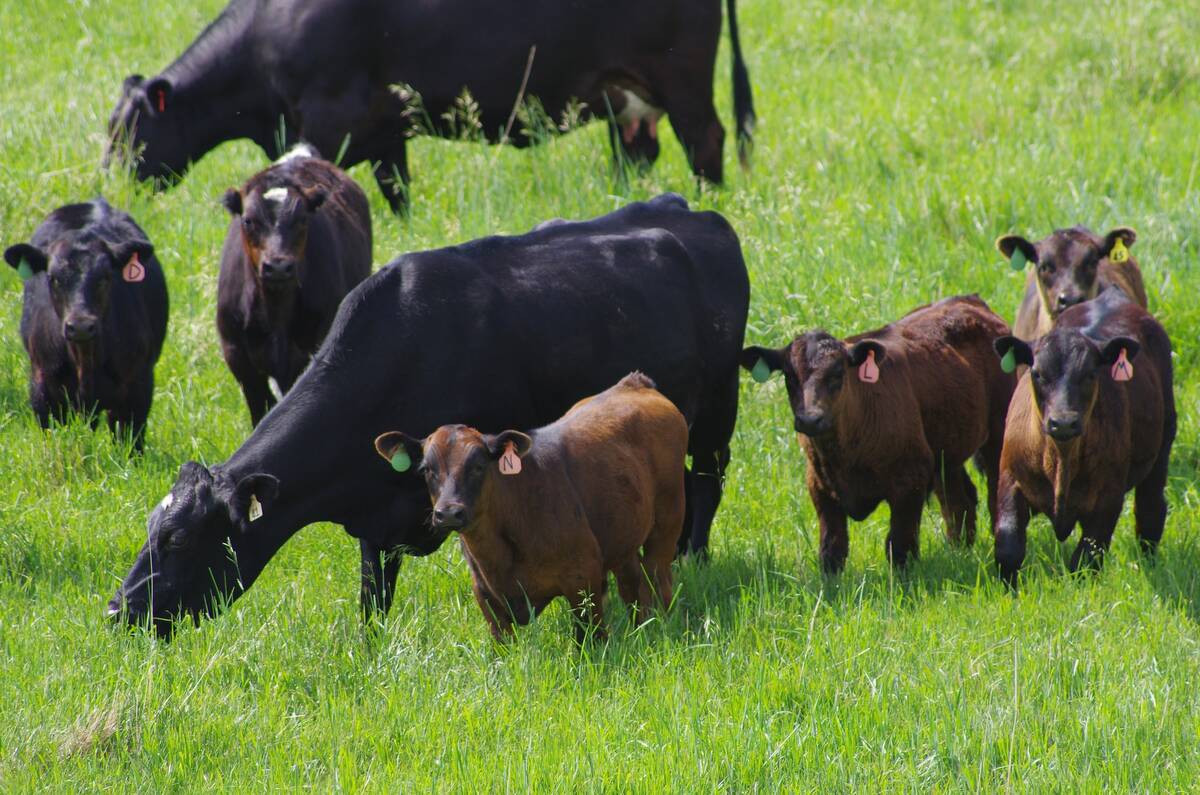
Diagnosing and preventing lump jaw in beef cattle
Causes, symptoms, treatment, prevention and prognosis of lump jaw in beef cattle
Bovine tuberculosis (TB) is a contagious bacterial disease that is concerning because it can lie dormant in an infected animal for years without symptoms, and it can continue to live in the ground after all affected animals have been destroyed.
Bovine TB can also infect humans. Symptoms in humans include coughing, fever, night sweats, chest pain and loss of appetite. As it progresses, other parts of the body can be affected, and it can cause permanent damage or death. In the early 20th century, six to 30 per cent of tuberculosis cases came from cattle. However, most people who are infected with bovine TB do not get sick — it is more of a concern for the very young, the very old, or those who have a weakened immune system. In 2021, there were 1,829 active human TB cases in Canada, according to federal statistics.
Bovine TB also transfers from animal to animal. Wildlife, such as deer and elk, can get bovine TB and pass it from one farm to another, which is hard or nearly impossible to trace.

When the disease progresses in cattle, it may result in enlarged lesions, specifically around lymph nodes. Common places are the head, thorax, lungs, spleen and liver. It can also cause weight loss, weakness, loss of appetite and a fever. Symptoms like this, however, are uncommon.
“Generally, clinical signs are not seen by the producer… usually it’s found at slaughter,” said Dr. Allison Danyluk Ross, a regional veterinary officer with CFIA, at the Saskatchewan Beef Industry Conference.
Diagnosing bovine TB is not easy, either. There are no entirely accurate diagnostic tests for when the animal is alive. There are a few tests of this nature — the caudal fold test, where they inject tuberculin into the caudal fold and come back in three days to see if there is a reaction. In addition, the bovigam test measures the interferon-gamma in the blood, which is produced as a response to the tuberculin bacteria present in the body. However, none of these tests are 100 per cent accurate. The only way to be sure a cow has bovine TB is to test tissues in the body after the animal has been slaughtered.
There are a few different tests done at slaughter. The first is histopathology. There are certain chemical characteristics in the tissue indicative of TB, so acid-fast staining will reveal the bacteria, which show colour. However, it takes 16 weeks to get a result from the lab. Another test is the polymerase chain reaction, or the PCR, which is a confirmatory test, and takes much less time than the histopathology.
“Depending on the number of bacteria in that tissue, sometimes they might have to rerun the PCR a few times. So sometimes it can take up to two weeks to get a final result, but we will be able to confirm it quicker than the 16 weeks at least,” Ross said.
Eradication program
Slaughter surveillance is the backbone of the CFIA’s bovine TB eradication program.
When they started slaughter surveillance in the 1980s, TB cases went down significantly. Now, it occurs at a prevalence of less than 0.01 per cent.
“The caveat to that is, when we find a positive at slaughter, we have to trace it back to the herd of origin and do the work to eradicate the disease. And so the burden becomes placed on the affected producer in this program,” Ross said.
However, other cases pop up. Investigators trace infections back to the source farm. They also investigates places that have bought animals from the source farm, as well as operations that have sold animals to the source farm. These are known as trace-ins and trace-outs.
“We fill out something called the premise investigation questionnaire. We ask lots of questions about herd management, how the animals are moved around, who they might have contact with,” Ross said.
The source farm, or herd of origin, is placed under quarantine, meaning no livestock, livestock products or by-products can enter or leave the premises without CFIA approval. Fences and gates around the farm must be maintained to control animal movement; all persons entering the farm must be informed of the quarantine; all sick and dying animals and any that escape must be reported; and farm tools and equipment that may have been exposed to infected animals must be cleaned and disinfected.
When investigators finds a positive case and identify the herd of origin, they work to eradicate the disease. This means destroying any animals that have reacted to tests. When investigators find a group of cattle they suspect are infected, they can prepare the slaughter plant to protect those tissues and ensure the staff is protected and has personal protective equipment to prevent people from contracting the disease as they slaughter the animals and collect tissue samples.
Following depopulation, the owner can clean the premises, as bovine TB can persist for a long time in the ground.
After cleaning, CFIA can lift the quarantine. There is a 45-day wait time before the producer can begin to restock. Replacement animals will be subject to two annual negative herd tests. Testing is done within the first 45 days to make sure the disease doesn’t persist despite disinfection.
However, cleaning is optional, and the producer shoulders the cost. If the producer doesn’t clean their operation, they must wait two years before restocking and no testing will be required.
The financial burden of bovine TB for affected producers is “incredibly impactful,” said Dr. Stephanie Smith, chief veterinary officer for Saskatchewan. She said costs included “cleaning and disinfection, labour, bringing people in to handle animals, providing additional feed and, of course, the concern about the value of the animals … if they were depopulated.”
Issues and concerns
Eradication and traceability help Canada maintain TB-free status, supporting international market access for Canadian cattle and beef.
At the Saskatchewan Beef Industry Conference, producers raised concerns around the eradication program, such as gaps in bovine TB surveillance and the financial burden.
“I don’t think it’s fair either that someone should have to deal with this, especially when they cannot prevent it. So that’s certainly one of the issues we’ve been looking at, and I encourage again, let’s look at this from a policy perspective. How can this be better, and how do we put those supports in place?” Smith said.
Producers can encourage their associations to lobby the government to provide compensation for those who are affected.
Ross acknowledged there are gaps in the surveillance of bovine TB, but it mostly has to do with how much work goes into testing and tracing and how many people are staffed to do that. CFIA has taken suggestions from previous cases and has tried to implement changes for the future.
A big concern for Smith is how something like this could affect the producer’s mental health.
“People talked about the added pressure of having this initial thing that they could not prevent, the potential fears of having tuberculosis, the stigma of how they could be perceived while they’re going through investigations, how other colleagues could look at them, or their neighbours.”
Smith said most people who have experienced bovine TB on their operation do not feel comfortable talking with others about it, but it is important not to be alone.
Because of that, an industry liaison position has been created in Saskatchewan for the current investigation, so those affected can be supported directly by an impartial third party.
“So they can be in the room with you when conversations are taking place so that you don’t have to be alone,” Smith said. “And really the advocacy for producers, that is part of that. It’s having somebody there that is not directly impacted, that can think about this critically, that can question why, that can support you through that whole process.”
Producers can request support from the industry liaison through Smith’s team, or from industry associations.
Depopulation was underway as of March 13 for the Saskatchewan herd with a positive case. Investigators had also started tracing other animals and herds of origin.




